
Adventure tourism is one of the fastest growing segments of the tourism industry, with a global market valued at $586 billion in 2018, and projected to reach $1,627 billion in 2026. However attractive this sector seems to be, drawing adventure tourists is no easy feat. Adventure travel providers need to understand, first of all, that travel trends and travelers’ preferences keep changing from time to time. What works this year may not work next year. Tourism professionals therefore have to always stay ahead of the curve. Today, there is a real thirst for authenticity of a destination, bound up with sustainability concerns including support for local businesses, reducing plastic consumption, community outreach and cultural sensitivity, especially in the adventure travel sector. Adventurers used to prioritise personal challenges and individual thrills. Now that “authenticity” ascends as the travel buzzword, they prefer to immerse themselves in authentic and local culture, from the history and traditions of the place to gastronomic routes and local products. This change of trend is reflected in the world’s largest tourism source market. Chinese tourists are becoming less satisfied with superficial tourist activities and shopping and increasingly driven by a desire to explore authentic, social and shareable experiences at the destinations they travel to. Accordingly, tourism providers in many countries are now providing different types of tourism products which create an authentic tourism experience. In Australia, tourists can participate in indigenous tourism activities such as traditional festivals, dances and guided tours, together with aboriginal Australians. Another example is the cookery classes offered in South-East Asian countries such as Thailand, Vietnam and Indonesia, in which tourists have the opportunity to cook with a local chef using local ingredients, recipes and cooking techniques. Not only do tourists today want to have unique, personalised journeys, they also want to create a positive impact when they travel. According to Booking.com, 72% of travelers makes more sustainable travel choices, and up to 73% of global travelers intends to stay in an eco-friendly or green accommodation.* “Travellers are thinking about who we’re giving our money to, where it’s going and how our actions and that of our accommodation choices could be kinder to people and places,” Juliet Kinsman, founder of bouteco.com, told National Geographic. Despite good intentions, the survey reveals that 37% of global travelers do not know how to make their travel more sustainable. The challenge thus lies not only on travel providers to have a strategy for sustainability but also to effectively communicate it to their clients. Some may struggle with initiating sustainability approaches or creating meaningful authentic products, while others do not know how to send a message to the audience. On February 12-14, 2020, international experts will gather in Kota Kinabalu, Sabah, Malaysia to address these issues as well as discuss opportunities in this dynamic tourism sector at the PATA Adventure Travel Mart and Conference 2020. Under the theme “Ahead of the Curve: Authenticity and Sustainability in Adventure,” the one-day conference includes concurrent sessions that allow participants to delve deep into the top trending themes in travel: sustainability and authenticity. Each session features a 45-minute presentation, followed by a 1.5-hour workshop with working exercises. Led by Eric Ricaurte, Founder & CEO, Greenview (Singapore), the Sustainability Track will look into responsible initiatives used by tour operators, accommodations and destinations – and how to message them to clients, including best practice examples from companies around the world and guidance on how to integrate sustainability ideas into day-to-day business operations. The Authenticity Track will looks at how to integrate adventure elements into tour programmes, including how to identify and use local resources (guides, food, architecture, etc) to create more authentic and meaningful experiences for travellers. This track will be led by Dan Moore, CEO, Consultant, Lead Facilitator, Pandion Consulting & Facilitation (USA). The PATA Adventure Travel Conference and Mart (ATCM) 2020 is Asia Pacific’s leading travel trade event dedicated to the adventure travel industry.
Create: Jan 11, 2020 Edit: Jan 11, 2020 International News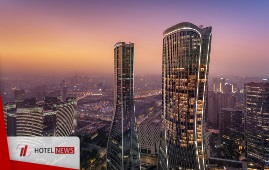
Hotel industry and travel news from around the Asia Pacific region: Adventure travel on the rise in China, Silkari acquires management rights of Oaks Lagoon in Port Douglas and more... Hana Financial Investment and Hotel Lotte to Acquire The Hotel at The Mark for USD175 Million Korean-based brokerage firm, Hana Financial Investment Company Limited (“Hana”), and Korea-based hospitality company, Hotel Lotte Company Limited (“Hotel Lotte”) have acquired the 189-key The Hotel at The Mark from US-based private equity firm, Stockbridge Capital Group, under a 70:30 real estate investment trust, for USD175 million. The luxury hotel is part of a 44-story F5 Tower in downtown Seattle and occupies the lower 16 floors. Subsequent to the acquisition, the hotel is set to open under the brand name of Lotte Hotel Seattle in June 2020. The acquisition is part of Hotel Lotte’s effort to expand abroad to better compete with global hotel chains. Silkari Acquires Management Rights of Oaks Lagoon in Port Douglas Australia-based luxury accommodation brand, Silkari Hotels (“Silkari”), has acquired the management rights of 175-key Oaks Lagoon in Port Douglas for an undisclosed price. Located approximately 50-minutes north of Cairns International Airport, the high-end apartment complex is set in a tropical complex around six lagoon-style pools. Previously managed by Thailand-based Minor Hotel Group, the property also features lap pool, fitness centre, tennis courts, a restaurant and bar, spa and conference facilities. Following the acquisition, Silkari will rename the property as Silkari Lagoons. Oak Lagoon is Silkari’s third accommodation asset, joining the 212-key Silkari Suites at Chatswood and Silkwood by Silkari, a 219-key and 37-townhouse complex in Pagewood, in Sydney's eastern suburbs. Dexus and Queensland Government Agree on AUD2.1 Billion Project in Australia The Queensland government and Australia-based real estate investment trust company, Dexus, has signed a facilitation agreement on a proposed AUD2.1 billion Waterfront Brisbane concept master plan. The Waterfront Brisbane development seeks to transform Brisbane’s Eagle Street Pier into a premier and leisure destination. Some key developments of the proposal plan include two premium office and mixed-use towers on the Eagle Street Pier site, as well as riverfront restaurants, casual dining places and retail units. The development will also feature a revitalised public realm which measures approximately 7,900 square metres of open space. Wharf facilities supporting commercial and river tourism operations will also be upgraded to support the delivery of a new City Reach ferry terminal. Construction on the Eagle Street Pier site is expected to commence in 2022 and the first tower to be delivered in 2026. India-based Park Hotels Files Draft Papers for INR10 billion Initial Public Offering India-based Apeejay Surrendra Park Hotels, which operates luxury boutique hotels under ‘The Park’ brand in India, has filed its draft red herring prospectus (“DRHP”) for an INR10 billion initial public offering (“IPO”). The IPO comprises a fresh offer of INR4 billion and an offer-for-sale (“OFS”) of up to INR6 billion by its existing investors and promoters. The net proceeds of the IPO will be utilized to repay debt and for general corporate purposes. The company currently manages 22 hotels with 1,937 rooms across 15 cities in India. As per the DRHP, it has a pipeline of 1,536 rooms expected to begin operations within the next three years. The company also has a retail food and beverage business under the ‘Flurys’ brand, which operates 38 outlets in Kolkata, and one outlet each in Navi Mumbai and New Delhi. Adventure Travel on the Rise in China According to a recent report, adventure travel as a kind of burgeoning outdoor tourism has gained increasing popularity among Chinese people who enjoys unique, fresh and exciting experience. As Chinese tourists become wealthier and more experienced, they show a growing desire to explore the world and try more adventurous activities such as climbing, diving, caving, sailing, paragliding, cycling and hiking. Estimated data from market consulting firm, Allied Market Research, showed that the global adventure tourism market was valued at USD586 billion in 2018 and is projected to reach around USD1.63 trillion in 2026. Chinese travellers are playing an increasingly important role in the global adventure tourism economy. According to China Adventure Association, there are 130 million to 170 million Chinese people participating in outdoor adventures, with annual growth of around 15%.
Create: Jan 7, 2020 Edit: Jan 7, 2020 International News
New YouGov data shows one in five tourists are now more interested in visiting Saudi Arabia for a vacation and according to the Saudi Commission for Tourism and National Heritage, China, UK, Malaysia, United States and Canada top the list of new arrivals since the launch of its first tourism visa. New YouGov research has identified a rise in tourism interest in Saudi Arabia from around the world, with one in five tourists more likely to visit Saudi Arabia for a vacation now than five years ago. The YouGov research surveyed 9,521 people across the USA, China and five key markets in Europe, revealed a growing interest in visiting Saudi Arabia. The data coincides with the Saudi Commission for Tourism and National Heritage (SCTH) revealing its top inbound source markets since Saudi Arabia's opened its doors to international tourism. Since the launch of the new tourism visa in September, visitors from China, UK, Malaysia, United States and Canada have topped the list of new arrivals welcomed into Saudi Arabia. Saudi's historic sites appear to be an important attraction for tourists to the Kingdom. Amongst those surveyed by YouGov, over one in five (22%) are keen to visit Jeddah's historic old town, a UNESCO World Heritage Site. Meanwhile, another UNESCO site, previously only known to a few travellers, is gaining a following amongst Chinese millennials. Al Ula now tops the list of destinations in the Arab world of a third of Chinese tourists under the age of 35. Italians top the list with 35% surveyed saying they would be more likely to visit Saudi Arabia following the new visa launch. British tourists were 15% more likely just ahead of Americans at 14%. The research also points to new opportunities for multi destination tourism growth. Of all respondents 73% reported a preference to visit several destinations rather than stay in one location. Arab League Tourism Ministers Meeting The research is released as Saudi Arabia takes on the presidency of the Arab League Tourism Ministers Meeting at the end of a historic year for the Kingdom. Tourism Ministers from across the Arab world met earlier this month for the 22nd Annual Arab Tourism Ministers Meeting. During the meeting they discussed opportunities for regional-wide tourism offerings and unified strategies for sustainable growth of the sector to benefit local communities and the environment. His Excellency Ahmad bin Aqil Al Khatib Chairman of the Board of Directors of the Saudi Commission for Tourism and National Heritage (SCTH) said: "This year marked the historic moment of Saudi Arabia opening its doors to the world. We are welcoming more visitors and investors than ever before. To those thinking of visiting Saudi Arabia in 2020, you won't find a warmer welcome anywhere in the world."
Create: Jan 6, 2020 Edit: Jan 6, 2020 International News
The South East Asia (Indonesia, Malaysia, Myanmar, Philippines, Singapore, and Vietnam) lodging industry experienced mixed sentiments for 2019. Despite growth in tourism arrivals, the ever-changing political climate, mercurial global economic conditions, and growth in accommodation supply are few of the many reasons that continue to put downward pressure on several markets. Even with the headwinds, the underlying dynamics behind demand growth appear to be resilient and are expected as such going forward. The global economic growth is anticipated to end off at a rate of 3.0% in 2019, before gradually recovering back to the 2018 performance of 3.6% in 2021. Nonetheless, South East Asia remains the fastest-growing region in the world and is projected to grow at a rate of 5% in 2019. While the global Consumer Price Index (CPI) forecast remains relatively stable, South East Asia’s CPI has been projected to abate from 3.4% in 2018 to 2.8% in 2019, mainly held back by slow wage growth and prolonged trade tensions. However, South East Asia’s unemployment rate remains at a low 3.5% and is expected to prevail at the same level through 2021. The region’s inflation is anticipated to rise in 2021 on the back of looser monetary conditions and resilient domestic demand. As of year-to-date (YTD) Q3 2019, South East Asia registered a growth rate of 12.3% in international visitor arrivals, a 2.1% increase from the same time last year. While Malaysia recorded year-over-year (YOY) growth of 3.7% as of YTD September 2019, a five-year compound annual growth rate (CAGR) of 0.1% reveals that the country continues to miss tourism goals and struggles to attract more tourists. The South East Asia (Indonesia, Malaysia, Myanmar, Philippines, Singapore, and Vietnam) lodging industry experienced mixed sentiments for 2019. Despite growth in tourism arrivals, the ever-changing political climate, mercurial global economic conditions, and growth in accommodation supply are few of the many reasons that continue to put downward pressure on several markets. Even with the headwinds, the underlying dynamics behind demand growth appear to be resilient and are expected as such going forward. The global economic growth is anticipated to end off at a rate of 3.0% in 2019, before gradually recovering back to the 2018 performance of 3.6% in 2021. Nonetheless, South East Asia remains the fastest-growing region in the world and is projected to grow at a rate of 5% in 2019. While the global Consumer Price Index (CPI) forecast remains relatively stable, South East Asia’s CPI has been projected to abate from 3.4% in 2018 to 2.8% in 2019, mainly held back by slow wage growth and prolonged trade tensions. However, South East Asia’s unemployment rate remains at a low 3.5% and is expected to prevail at the same level through 2021. The region’s inflation is anticipated to rise in 2021 on the back of looser monetary conditions and resilient domestic demand. As of year-to-date (YTD) Q3 2019, South East Asia registered a growth rate of 12.3% in international visitor arrivals, a 2.1% increase from the same time last year. While Malaysia recorded year-over-year (YOY) growth of 3.7% as of YTD September 2019, a five-year compound annual growth rate (CAGR) of 0.1% reveals that the country continues to miss tourism goals and struggles to attract more tourists. Vietnam achieved the highest CAGR of 15.4%, followed by Indonesia (12.4%) and Myanmar (9.2%). The strong tourism demand has been driven by an increase in flight connectivity and concerted tourism efforts by the government, such as easing of visa restrictions, developing infrastructures, supporting tourism enterprises, and the promotion of tourism campaigns. Looking forward, the Indonesian government has actively promoted its "10 New Balis" program, established in 2018, to develop and promote several destinations beyond Bali, including Mandalika in West Nusa Tenggara, Thousand Islands in Jakarta, Tanjung Lesung in Banten, Tanjung Kelayang in Bangka Belitung, Borobudur Temple in Central Java, the Bromo Tengger Semeru National Park in East Java, Labuan Bajo in East Nusa Tenggara, Wakatobi in Southeast Sulawesi, and Morotai in North Maluku. In conjunction with Visit Malaysia 2020 (VM2020), Tourism Malaysia has recently launched a digital initiative, the VM2020 Website Campaign, which aims to entice and showcase various destinations in the country to more tourists. In early 2019, the Myanmar government launched the Myanma Tourism Bank to spur development in its growing tourism sector by offering low interest loans to tourism enterprises. In the Philippine government’s National Tourism Development Plan, the country seeks to spur growth and development through foreign direct investment by showcasing attractive areas in the Tourism Enterprise Zones. Singapore has also announced mega projects to fuel long-term tourism including the Greater Southern Waterfront development, Mandai eco-tourism hub, Jurong Lake District’s seven-hectare tourism development, and the expansion of the two integrated resorts. Apart from an effort to further develop less well-known tourist sites and diversify tourism products, Vietnam will soon launch a new tourism marketing campaign, #VietnamNOW, to build awareness of the country’s tourism assets andevents. Vietnam achieved the highest CAGR of 15.4%, followed by Indonesia (12.4%) and Myanmar (9.2%). The strong tourism demand has been driven by an increase in flight connectivity and concerted tourism efforts by the government, such as easing of visa restrictions, developing infrastructures, supporting tourism enterprises, and the promotion of tourism campaigns.
Create: Jan 6, 2020 Edit: Jan 6, 2020 International News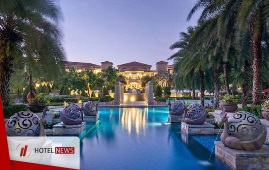
JW Marriott, part of Marriott International, Inc., today announced the opening of JW Marriott Sanya Haitang Bay, located on the Haitang Bay, the National Coast of China. The property marks JW Marriott’s second resort on Hainan and eighteenth hotel in Greater China, seamlessly blending in with the lush landscape of Haitang Bay and illustrating the beguiling charm of the entire coast. Adjacent to Yalong Bay National Tourism Resort, Haitang Bay boasts stunning scenery including tropical forests, white sandy beaches and shimmering waters. A 40-minute drive from Sanya Phoenix International Airport, the area is home to numerous tourist attractions including Wuzhizhou Island, Sanya Haichang Fantasy Town, Nanshan Temple and the Wanda International Cinema, among others. The new JW Marriott Sanya Haitang Bay is located on a 21.8-kilometer-long shoreline, providing a luxury escape for travelers who come to feel present in mind, nourished in body and revitalized through the brand’s curated programming. “We are truly delighted to continue to expand our brand portfolio in Sanya, China.” said Mitzi Gaskins, Vice President & Global Brand Leader, JW Marriott. “JW Marriott Sanya Haitang Bay is bringing a modern, luxurious setting to our guests in Sanya, as well as encouraging them to embrace the present and savor life to the fullest in a mindful and nourishing environment.” Inspired by the theme of ‘stone’, the subtle design by Smallwood, Reynolds, Stewart, Stewart (SRSS) connects guests at JW Marriott Sanya Haitang Bay with nature through endless arcades, ceramic accents, an octagonal fountain and peacock pavilion that reflect the hotel’s luscious backdrop. The property’s 142 guestrooms and 18 villas, ranging from 735 sq. ft. to 7,180 sq. ft., feature private balconies and combine modern designs with genuine aesthetics to create the optimum sense of relaxation. Two exquisite dining facilities ensure the ultimate epicurean experience for travelers. Guests can enjoy live cooking presentations in JW Kitchen’s all-day open-kitchen restaurant or relax in the tropical ambiance of the JW Lounge, featuring signature cocktails and wines from around the world. Additionally, JW Marriott Sanya Haitang Bay highlights its commitment to naturally-inspired dining through its JW Garden to offer fresh, local ingredients for authentic farm-to-table dining experiences, hands on cooking classes and specialty drinks. JW Marriott Sanya Haitang Bay is the perfect venue for hosting romantic weddings, corporate meetings and special events with over 37,600 sq. ft. of meeting space, 86,000 sq. ft. of outdoor lawn, flexible seating solutions and comprehensive business facilities. Guests can rejuvenate at the fully-equipped Health Club featuring over nine different-sized pools, or enjoy pampering at the luxurious Spa by JW. “The increase and transformation of the tourism market within China and specifically Hainan is significant, with the island now housing 23 hotels, covering different lifestyle needs,” said Henry Lee, President, Greater China, Marriott International. “The expansion of the JW Marriott brand in Sanya allows us to add unique offerings and enriching, thoughtfully-curated experiences for guests, leaving them with unforgettable memories.”
Create: Jan 4, 2020 Edit: Jan 4, 2020 International News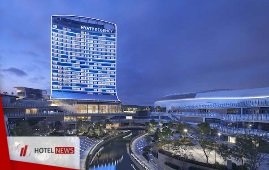
Hyatt Hotels Corporation (NYSE: H) today announced the opening of Hyatt Regency Hengqin in Zhuhai, Guangdong Province, China. With 493 rooms, six dining outlets, and 40,440 square feet (3,757 square meters) of event space, the hotel is designed for business and leisure guests alike seeking a seamless, intuitive experience in the city. Situated in the heart of the dynamic and fast-growing Greater Bay Area of southern China, Hyatt Regency Hengqin is part of the vibrant Novotown complex, which features an impressive array of attractions including Lionsgate Entertainment World, Natinoal Geographic Explorer and more. The hotel is also within easy reach of the Hong Kong – Zhuhai – Macau Bridge, offering convenient access for guests traveling throughout the region. “We are thrilled to announce the opening of Hyatt Regency Hengqin,” said William Yuen, general manager of Hyatt Regency Hengqin. “As a new, international branded hotel in Hengqin, Zhuhai, we are excited to offer superior comfort and excellent service at a convenient location.” Guestrooms Hyatt Regency Hengqin has a total of 493 guestrooms, including 55 suites, ranging from and from 430 to 2,583 square feet (40 to 240 square meters). Subtle design touches include soft warm timber blinds, giving an overall feeling of natural comfort. Regency Club guests enjoy exclusive access to our club lounge offering a range of complimentary amenities including concierge service, private check-in and check-out, delicious bites served daily, and a dedicated meeting room. Drinking and Dining Boasting six restaurants and bars, the hotel offers a wide range of global cuisine. Market Café is a self-service, market-style restaurant where diners can watch their food being prepared by expert chefs at live cooking stations. La Cucina is an extension of Market Café, bringing the delicious flavors of Italy to Hengqin, with a variety of popular European dishes. The Lounge provides a relaxed atmosphere to decompress and features a vast selection of specialty teas, coffees, cocktails and snacks. In early spring of 2020, the hotel will open three additional food & beverage outlets. Xiang Yue Chinese restaurant will specialize in the delicate flavors of Cantonese cuisine. The restaurant will feature an open kitchen, reminiscent of a hawker-style eatery, allowing diners to watch chefs prepare dishes to order. With a series of fish tanks showcased throughout the dining space, the menu highlights fresh seafood and top-quality ingredients. Pool Pavilion will be a relaxing, al fresco dining venue delivering sumptuous barbecue and craft cocktails. The 180° rooftop bar, will be located on the 23rd floor, offering with a 180° outdoor landscape and stunning views. Here, visitors can enjoy the charm of Hengqin under the stars with wine, cigars and music. Meetings & Events Whether hosting a wedding, product launch, large-scale conference, or an intimate meeting, event planners will find their every need catered for at Hyatt Regency Hengqin. The hotel boasts a total of 40,440 square feet (3,757 square meters) of event space, including the 17,437 square foot (1,620 square meter) Regency Ballroom, which features an outdoor garden, floor-to-ceiling windows, natural lighting, and can accommodate up to 1,300 guests. The Regency Salon, a premium event venue with 10,258 square feet (953 square meters) of space, offers two open kitchen display areas. Three additional multipurpose rooms provide an ideal space for small groups and meetings.
Create: Jan 4, 2020 Edit: Jan 4, 2020 International News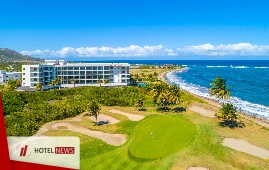
Hilton (NYSE: HLT) announced the opening of KOI Resort Saint Kitts, Curio Collection by Hilton, representing the brand’s debut in St. Kitts and Nevis, which will also be KOI Hospitality’s first entry into the hotel space. The 102-room oceanfront haven is the latest addition to Curio Collection by Hilton, reinforcing the growth of its portfolio of one-of-a-kind hotels and resorts in premier destinations across the Caribbean and Latin America. Meaning ‘love’ in Japanese, the ‘KOI’ name was the inspiration behind the love and care that was put into the property, including the resort’s meticulously appointed guest rooms, delectable cuisine and poolside programming. Situated along Half Moon Bay and adjacent to the Royal St. Kitts Golf Club, KOI Resort Saint Kitts will launch a new lifestyle, vibe and frame of mind for those visiting the destination by offering Asian-inspired design, locally-inspired programming, globally celebrated cuisine by KOI Hospitality and immeasurable experiences for travelers. “Rapidly evolving into a high-end tourist destination in the region, St. Kitts has experienced a spike in tourism this year with arrivals booming 14.5 percent higher over the same period last year,” said Juan Corvinos, vice president, development, Caribbean and Latin America, Hilton. “Now growing at one of the fastest rates in the Caribbean, we recognize the demand for upscale accommodations, intuitive service and authentic experiences in this market. We look forward to providing travelers with a one-of-a-kind experience that can’t be found elsewhere on the island, as we continue to expand Curio Collection by Hilton’s presence globally reaching more than 80 properties.” Set on prime beachfront property, KOI Resort Saint Kitts is nestled on the quiet and secluded island of Saint Kitts with 102 guestrooms, a full-service pool terrace overlooking the ocean, a well-equipped gym and bespoke spa treatments, and a variety of elevated dining options, including the famed KOI Restaurant. The hotel is located within the “Cradle of the Caribbean” where the Atlantic Ocean meets Caribbean Sea. “KOI is one of the world’s largest hospitality brands and most iconic, offering memorable experiences in LA, Las Vegas, New York, Bangkok and Abu Dhabi,” said Nick Haque, CEO of KOI Hospitality Group. “Today is a dream come true for our evolving brand as we open the first KOI Resort on the beautiful island of Saint Kitts. Our new oasis will retain the same vision of our restaurants with design that appeals to all the senses.” Every detail of the property was curated by the KOI Hospitality executive team, creating guest experiences at the highest quality standard, providing a sanctuary for locals and visitors alike. Highlights include: Thoughtful Design Upon arrival, the sensory experience begins as guests are greeted by the sound of water and an unparalleled view of the lush island landscape and ocean. With a striking yet minimalistic design, the lobby interiors were inspired by the majestic and zen vibe reminiscent of Southeast Asia. The eye-catching and bold façade is an artistic mélange of soothing white and beige which gives way to the modern and sleek lobby adorned with handcrafted details, rich textures and unique pieces of art inspired by the local culture. Each guestroom includes plush furnishings with neutral tones and a minimalistic approach to room decor. Guestrooms feature floor-to-ceiling windows leading out to a tranquil terrace with panoramic views of the ocean, golf course or nearby mountain range. Each room boasts a variety of signature design elements and luxurious amenities include soothing rain showers, relaxing bathtubs, lavishly appointed beds and other modern comforts. Experiential Amenities With a dreamscape design embracing the natural beauty of the island throughout every facet of the resort, guests can unwind at the resort’s pool situated mere steps from the ocean on plush lounge beds within the resorts’ expansive pool terrace, which boasts views of the crystal blue waters that blend seamlessly into a vibrant blue sky. Notable amenities include the Kaya Spa, with a wide variety of body treatments, massages and facials in a tranquil setting. Other activities include an on-site fitness facility at the well-appointed Kaya Wellness. Globally Celebrated Dining Options Recognized internationally as a culinary hotspot for celebrities and globetrotters, the KOI brand is known for elevating food and hospitality to an art form. At KOI Resort, guests are welcomed by three culinary concepts, offering a genuine sense of style, haute cuisine and service. Culinary outlets include: KOI Restaurant – The highly acclaimed KOI Restaurant brand brings its signature restaurant to St. Kitts featuring sultry Asian-influenced design and delectable Japanese-inspired cuisine. KOI Saint Kitts is a sophisticated blend of modern elegance and Asian tradition. The candle lit dining room offers a zen design of earth-toned colors and sleek lines. Notable menu items include the KOI crispy rice and the Miso Bronzed Cod, as well as a variety of signature rolls including a baked crab roll and sunfire roll. Jaya Kitchen & Cocktails – As the resort’s poolside bar and restaurant, Jaya offers beach-inspired entrees and snacks such as salads, grilled sandwiches, brick-oven pizzas and fresh seafood and sushi. Guests are also welcome to enjoy craft cocktails, fine wines and beers from a curated selection of both local and imported brands. Jaya Ultra Lounge – For those looking for a sexy night of cocktails and vibrant scenery, Jaya Ultra Lounge serves a menu of Caribbean-inspired libations and customized craft cocktails. Guests can sample a flight of locally-sourced Caribbean rum while grooving to a modern soundtrack while watching the sun goes down. Meeting, Events and Weddings Ideal for intimate celebrations and functions, KOI Resort Saint Kitts offers an exquisite backdrop for a barefoot soiree followed by an elegant poolside reception or formal seated dinner overlooking the ocean. Those looking to host small corporate meetings, executive retreats and incentive groups can also take advantage of the unique venues and experiences available at a boutique-style hotel. Beyond redefining the resort experience for leisure guests, the property applies the same high-touch experience for the meetings and events market, with more than 6,000 square feet of total function space and state-of-the-art meeting facilities for up to 300 guests. Experiences and Cultural Immersion In addition to on property activities including water sports and state-of-the-art health/wellness offerings, guests have the option to explore the destination in style by renting a catamaran to sail to Nevis, snorkeling at Dieppe Bay Beach and ziplining the island’s lush forests. The resort is just minutes away from the St. Kitts & Nevis International Airport, Brimstone Hill Fortress National Park (a UNESCO World Heritage Site), Caribelle Batik and Mount Liamuiga. “With air arrivals increasing 15 percent1 in the first two months of 2019, St. Kitts & Nevis is a focal point in the expansion of Curio Collection to destinations where tourism continues to flourish,” said Jenna Hackett, global head, Curio Collection by Hilton. “With the opening of KOI Resort Saint Kitts, we look forward to introducing travelers to the unexpected and authentic Curio Collection experience that embodies the island’s local culture.” Hilton currently has a portfolio of more than 150 open hotels and resorts to welcome travelers in the Caribbean and Latin America. In its 100th year, the company continues to pursue additional growth opportunities in the region and currently has a robust pipeline of approximately 95 hotels throughout the region, including nearly 20 throughout the Caribbean.
Create: Jan 4, 2020 Edit: Jan 4, 2020 International News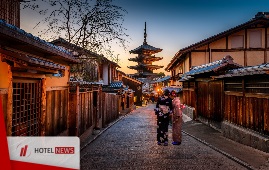
Key trends - Technology advances to simplify travel; more conscious eco travel choices; Kyoto tops destination wishlist. Single apps for all travel needs, passport free travel, and mobile app check-in are the top three ‘new travel norms’ expected by travelers in the next decade, according to new research by Agoda. With the continued advancement of technology, revolutionary travel apps, and better connectivity, people expect a lot more from their travel experience in the next decade. Specifically, Southeast Asians half of all respondents in Indonesia (56%), Singapore (54%), Malaysia (53%), Taiwan (50%), the Philippines (48%) and Thailand (48%) considering this the norm in the next decade. This compares to only a third of people in the United Kingdom and the United States (33%). Specifically, in Taiwan (50%) and in Southeast Asia half of all respondents in Indonesia (56%), Singapore (54%), Malaysia (53%), the Philippines (48%) and Thailand (48%) considering this the norm in the next decade. This compares to only a third of people in the United Kingdom and the United States (33%). Meanwhile, Singapore (50%), Vietnam (47%), Philippines (45%), China (44%) and Australia (41%) are the top five origins most likely to see a future with passport-free travel. In the UK and US, they are less expectant of this advancement with only 1 in 5 expecting it to be the norm within the next decade. Technology has already made such a positive impact on how and where people travel as innovative technologies, like those developed at Agoda, give travelers instant access to millions of hotels and home properties around the world with real time pricing and availability. “It is a technology golden age for travelers, as technology is developed to simplify the way anyone, anywhere can search, book and pay for flights, hotels or holiday accommodation. The 2000s was defined by the mouse and the computer, putting online travel booking just a click away. The 2010s, was defined by the smart phone and app, and put a travel agent in the pocket of every phone owner, and the 2020s will be defined by the power of data and Machine Learning (AI). This will enable companies like Agoda to provide personalized, more relevant recommendations to make booking travel even easier,” explains Timothy Hughes, Vice President of Corporate Development at Agoda. "Asian travelers, in particular, are enthused by, and expectant of, technology developments that enhance and simplify their travel experience. Asian based companies are now leading the world in technology adoption and development to achieve this. I expect to see Asia press ahead with that lead in the 2020s - especially in areas such as video and augmented reality, improved mobile services with more chat and voice solutions, and payments to help bring the "unbanked" online". Globally, people want to increase travel, but also to make eco-friendlier travel choices Universally, people want to increase the amount of travel they undertake in the 2020s. Exploring more of their own country is cited by 40% of respondents globally, while international travel more often is anticipated at 35%. What’s also interesting, in the context of global narratives on climate sustainability, is the trend that more than a quarter want to make more eco-friendly travel choices in the next decade. Travelers from Singapore, Thailand and Indonesia are most keen to make eco-friendlier choices perhaps more aware than others with the recent closure of Maya Bay in Thailand, and the Boracay rehabilitation program in Philippines, and thus travelers want to do their bit even when on holiday. Travelers in the 35-44 and 55+ age groups are most likely to want to explore their own countries and territories more (40% and 42% respectively), with those from China, Indonesia, Japan, Malaysia, The Philippines, Taiwan, Thailand, US and Vietnam choosing domestic destinations within their top three wishlist destinations for the coming decade. Meanwhile Korean and Japanese travelers see themselves taking more solo trips in the next decade. Taiwanese and Indonesians would prefer taking a sabbatical or gap year. Kyoto scoops #1 spot as the world’s most desired destination to visit in the 20s Asia dominates the global travel wishlists destinations for the next decade, as travelers from both Asia and the West showcase a growing curiosity for Asian treasures like Kyoto (Japan) famed for its Shinto shrine, Kyoto is an eclectic blend of culture, food and history, followed by Bangkok, (Thailand) and Bali, (Indonesia). Travelers in Philippines, Thailand, Taiwan, Vietnam and Malaysia want to cross off their own capital cities from their travel lists. Meanwhile, South Korea, the UK, and Australian travelers are the only one who don’t choose a domestic destination on their wishlists for travel in the next decade. American and British travelers alike are most excited about visiting New York in the coming decade, with New York also a top three choice for travelers from Australia, Japan and South Korea. Both Malaysian and Indonesian travelers would like to visit Makkah by 2030. USA Next Decade of Travel 42% of Americans expect to check into hotels using their mobile phones as the norm while 29% expect to use a single app for all their travel needs. 12% of Americans want to make more eco-friendlier choices when traveling in the next decade. New York tops wishlist travelers in the US in the 2020s. This is followed by London (#2) and Sydney (#3). 38% of Americans would like to explore more of their own country in the next decade, while 26% would like to travel more internationally About the travel data All figures, unless otherwise stated, are from YouGov Singapore PTE Limited. Total sample size was 16,383 adults. Fieldwork was undertaken between 12 December 2019 and 18 December 2019. The survey was carried out online. The figures have been weighted and are representative of adults in the respective countries (aged 18+). Additional country breakdown can be found in the Agoda Press Room. About Agoda Agoda is one of the world’s fastest growing online travel booking platforms. From its beginnings as an e-commerce start-up based in Singapore in 2005, Agoda has grown to offer a global network of over 2.5 million properties in more than 200 countries and territories worldwide, offering travelers easy access to a wide choice of luxury and budget hotels, apartments, homes and villas to suit all budgets and travel occasions. Headquartered in Singapore, Agoda is part of Booking Holdings (Nasdaq: BKNG) and employs more than 5,000 staff across 67 cities in more than 30 countries. Agoda.com and the Agoda mobile app are available in 38 languages.
Create: Dec 30, 2019 Edit: Dec 30, 2019 International News
International visitor spending more important to cities than it is to countries, nine out of 10 top fastest growing cities in past decade are in emerging and developing countries and cities over reliant on domestic or international demand are more exposed to economic and geopolitical risks. The World Travel & Tourism Council (WTTC), which represents the global Travel & Tourism private sector, today released its comprehensive Cities Report for 2019. The report focuses on 73 major tourism city destinations, providing estimates of the GDP and employment directly generated by the Travel & Tourism sector, and highlights successful initiatives, strategies and policies that have been implemented. With more than half (55%) of the world’s population living in urban areas – due to increase to 68% over the next 30 years – cities have become the hubs for global economic growth and innovation, while also attracting more people who want to live and do business. The report reveals these 73 cities account for $691 billion in direct Travel & Tourism GDP, which represents 25% of the sector’s direct global GDP and directly accounts for over 17 million jobs. Additionally, in 2018, direct Travel & Tourism GDP across the cities, grew by 3.6%, above the overall city economy growth of 3.0%. The top 10 largest cities for direct Travel & Tourism contribution in 2018 offer diverse geographic representation, with cities such Shanghai, Paris, and Orlando all sitting in the top five. International visitor spending is often more important to cities than it is to countries overall. For example, Riyadh had international visitor spending accounting for 86% of total spending, while in Saudi Arabia as a whole, international visitor spending accounts for 45% of total spending. International visitors accounted for almost half (45%) of tourism spending across the 73 cities in the study, and an average spend of 29% for economies worldwide. Revenues from international visitors, will in some cases pay for city infrastructure projects, the provision of public workers and services that improve the quality of life for residents. For example, in London, international visitors spent $17.5 billion in 2018, nearly twice as much as the operating costs of Transport for London, and near four times the amount than the total expenditure for policing and crime within the city. Furthermore, international visitors in New York spent $21 billion last year, which is 3.8 times higher than the costs of the NYPD, and nearly twice the budget for city schools. The report also reveals all but one of the 10 global cities with the highest direct Travel & Tourism growth over the past decade, are in emerging and developing economies such as China, Turkey and the Philippines. Infrastructure development and prioritisation of tourism, has been a key driver of Travel & Tourism growth. The projected trends for 2018-2028 continue in this way, with all 10 coming from emerging and developing countries such as Morocco, India, Vietnam and Indonesia. According to the report, cities with an overreliance on domestic or international demand are more exposed to economic and geopolitical shocks. Some large Brazilian and Chinese cities which are highly reliant on domestic demand, could be exposed to changes in the domestic economy. On the other hand, cities which are more reliant on international demand and/or particular source markets, may be vulnerable to external disruptions. It also highlights several cities which demonstrate a more balanced split between domestic and international demand, including Cancún, Munich, Cairo and New York, which despite their geographical differences, all maintain a near perfect 50:50 split. Furthermore, a high degree of seasonality can also, at times put pressure on infrastructure, due to the heightened demand during a narrow timeframe. WTTC President & CEO, Gloria Guevara said: “Cities are an essential part of the Travel & Tourism sector, both culturally and economically, and their significance is set to increase over time. Achieving sustainable growth in cities requires reaching far beyond the sector itself, and into the broader urban agenda. As we go forward, the Travel & Tourism sector must be integrated into all aspects of a cities’ planning agenda. To drive true economic impact that can translate seamlessly into social benefits, a city must engage with all stakeholders, across the public and private sector, in order to establish the cities of the future. There is an opportunity to create long-term, sustainable change that can create real change for communities, especially within cities.” Read the WTTC City Travel & Tourism Impact Report 2019 here.
Create: Dec 24, 2019 Edit: Dec 24, 2019 International News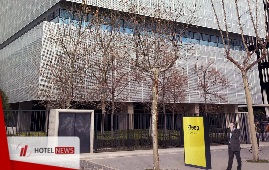
Deutsche Hospitality has signed an agreement for the first Zleep Hotel in Spain which will position the young economy brand outside Scandinavia for the very first time. In late 2021, the Zleep Hotel Madrid Airport will open close to the capital’s international airport and the Principe Felipe Congress Centre. It will offer 280 rooms and will join the Steigenberger Hotel & Resort Camp de Mar on Mallorca to become the second Deutsche Hospitality hotel in Spain. "For Deutsche Hospitality, Spain is a highly attractive market," says Thomas Willms, CEO, Deutsche Hospitality, "We see further potential here not only for our resort hotels, but especially for hotels in the business and economy sectors. With Zleep we have the ideal entry-level product into our brand world, offering quality, service and design at an affordable price." When Deutsche Hospitality acquired Zleep Hotels at the start of 2019, it bolstered its competitive position and added an economy segment brand to the group’s portfolio at the same time. Twelve hotels in Denmark and Sweden are currently part of the Zleep Hotels portfolio, further hotels are at the planning stage. "The Zleep Hotels brand has grown since its inception in 2003 with a young and dedicated team to become a well-known, successful hotel brand in Scandinavia," explains Peter Haaber, founder and CEO of the brand, adding, “We are looking forward to opening our first hotel in Spain and to launching into a new market.” "With the Zleep Hotel in Madrid, we offer price-conscious holidaymakers and business travelers who value design, quality and sustainability an exciting hotel offer in the Spanish capital. We are convinced that the Zleep community will find many new fans," says Robert Boller, Managing Director Zleep Hotel GmbH. All the signs indicate that there is more growth to come. Deutsche Hospitality currently has plans in the pipeline to open 30 further hotels under its various brands both in Germany and abroad.
Create: Dec 24, 2019 Edit: Dec 24, 2019 International News
TUI Blue Fieberbrunn makes its debut for the first Winter season, third TUI Blue hotel in Austria in final construction phase and further hotel openings in Gran Canaria and Morocco. TUI Group continues to expand the portfolio of its lifestyle hotel brand TUI Blue with the opening of the second hotel in Austria at the end of November 2019. The TUI Blue Fieberbrunn hotel is nestled in the mountains at the heart of the Kitzbühel Alps in Pillersee Valley in Tyrol. Alongside the TUI Blue Schladming hotel in Styria and the TUI Blue Montafon hotel, currently under construction, TUI Group will operate a total of three hotels of its flagship hotel brand in Austria from Summer 2020. By expanding the footprint of its TUI Blue hotels, the tourism group is consolidating its leading position in the international holiday hotel sector. FIRST TUI LIFESTYLE HOTEL IN TYROL The TUI Blue Fieberbrunn hotel, featuring 144 rooms, is located right on the ski slopes, just a few metres from the gondola valley station. From here, guests can plunge right into the skiing fun of Skicircus Saalbach Hinterglemm Leogang Fieberbrunn in the Winter, or discover the Alps during the Summer on an active holiday with 400 kilometres of hiking and mountain biking trails. The guests can also take advantage of the BLUEf!t concept for fitness, wellness and nutrition. TUI Blue Fieberbrunn thus offers both active holidays as well as relaxation at the Blue Spa featuring saunas, a steam bath and an indoor pool. Under the “For All” label, TUI Blue Fieberbrunn targets both couples, families and solo travellers. “TUI Blue targets experience-oriented holidaymakers looking for the right hotel to match their individual needs and preferences. I am delighted about the growing number of lifestyle hotels we operate in Austria. They perfectly complement our global portfolio of hotels in top beach locations and tap a range of new experiences for our guests”, says Artur Gerber, Managing Director TUI Blue. Over the past few weeks, the existing hotel was converted in the style of the flagship brand and has now reopened under the motto “An exhilarating alpine experience“. Around 200 guests, local inhabitants, partners, service providers as well as regional representatives from politics and the tourism sector took part in the opening ceremony and had a chance to get to know the comprehensive offering, philosophy and new design of the hotel. TUI BLUE ON A GLOBAL GROWTH PATH The month of November also saw the launch of two additional hotels in Gran Canaria and Morocco. The two hotels will be positioned as TUI Blue “For Two“ resorts, exclusively targeting holidaymakers aged 16+ placing the focus of their holiday experience on time spent together. TUI Blue will offer holiday destinations for more than one million guests and will start into the new season with 97 hotels in 18 countries in Summer 2020. TUI Group’s global flagship hotel brand clusters the tailored offerings of TUI Blue, TUI Sensimar and TUI Family Life under one umbrella brand.
Create: Dec 23, 2019 Edit: Dec 23, 2019 International News
Hilton announced the opening of Canopy by Hilton Hangzhou Jinsha Lake, a 10-storey, 179-room hotel that provides energizing, positive stays for business travelers and cultured vacationers. The waterfront hotel is conveniently located in the heart of Qiantang New District of Hangzhou East, offering a unique urban resort experience coupled with the city’s best views of Jinsha Lake. Canopy by Hilton Hangzhou Jinsha Lake marks the brand’s twelfth property and is owned by Vangoo Group and managed by Hilton. “With the rapid development of the high-tech and manufacturing industry and rich cultural heritage, Hangzhou Qiantang New District has immense potential in attracting leisure and business travelers,” said Qian Jin, area president for Greater China and Mongolia, Hilton. “Following the huge success of the brand’s Asia Pacific debut in Chengdu, we are thrilled to announce the second opening in the region in Hangzhou. The property underscores our commitment to maintain strong growth momentum in Greater China and continue to deliver positive experiences to our guests.” Once a wetland for farmers more than 2,200 years ago, the neighborhood where Canopy by Hilton Hangzhou Jinsha Lake resides has transformed into a hotbed for technological innovation and a growing destination for business events. Ideally located by the lake, the hotel is only a few blocks away from a shopping mall, dining outlets and the soon-to-launch Jinsha Grand Theatre, offering guests seeking local experiences the perfect base to discover local cuisine or enjoy a relaxing stroll along the lake’s shore. Guests can enjoy direct access to Hangzhou Metro Line 1 for quick connections to business districts, major scenic destinations and Hangzhou East Railway Station, and Xiaoshan International Airport is located only 25 kilometers away, just 30 minutes by car. “Through the neuroscience research we conducted in partnership with Nielsen earlier this year, we found that today’s Chinese travelers seek a taste of authentic local experiences during their travels, which is exactly what Canopy by Hilton offers at this new location,” said Gary Steffen, global head, Canopy by Hilton. “The hotel will immerse guests in Qiantang New District’s natural beauty and heritage with its architectural and design elements.” Canopy by Hilton Hangzhou Jinsha Lake has been carefully designed to incorporate the unique art culture of Hangzhou. Upon arrival at the hotel lobby, Canopy Central, guests will be greeted by a white ceramic centerpiece floating above the lobby inspired by the Osmanthus, the city’s flower, which is traditionally planted in front of local homes and known as a “golden welcome” to guests. The 3D-grafted decorative wall panels along the hotel corridors feature continuously changing illustrations of aquatic plants and marsh birds, immersing guests in the nature of Hangzhou.
Create: Dec 23, 2019 Edit: Dec 23, 2019 International News
